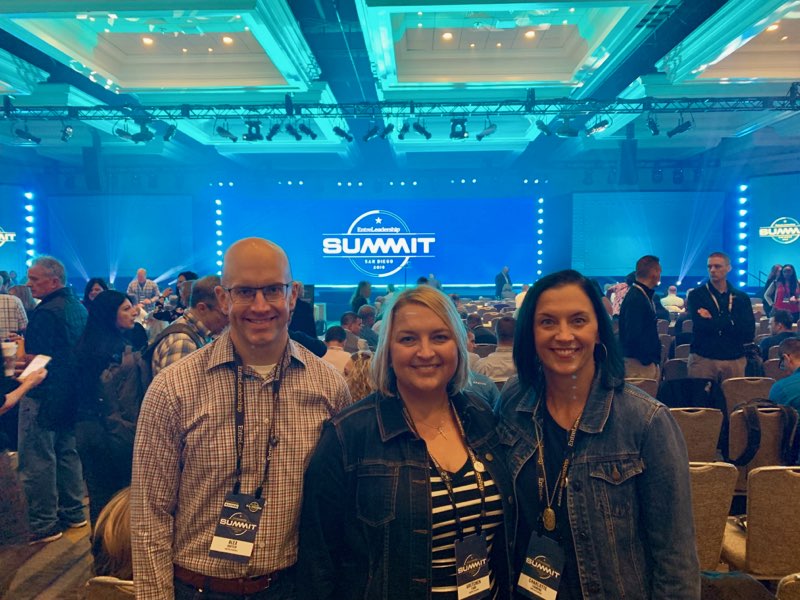What I’ve Learned from Working with My Sisters
One common question people ask me is, “What is it like to work with your siblings?” Over the next two weeks, I will use this blog to attempt to answer that question. Next week, I’ll talk about our shared leadership model, but for now, I want to share some lessons I have learned about relationships.
Before I get started, let me clarify a few things. First, I do not think of myself as an expert in relationships in general or sibling work relationships. The lessons I’m sharing are simply observations made from my own experience. My sisters and I have worked together since 2008, and our path has been mostly smooth because we have engaged outside help. As far as I’m concerned, our leadership coach is the expert!
Second, while our work relationships are constantly evolving, we have so far maintained healthy relationships outside of work. Our families travel together, and I often find myself at sporting events with my two brothers-in-law. Together, we have agreed that what would cause us to “walk away” from the business would be if our relationships began deteriorating. This is why we have sought out the professional help I mentioned above.
With all that out of the way, here are the three main lessons I have learned working with my sisters.
Don’t Judge a Book by Its Cover
Most people have heard this lesson repeated since their early school years. That said, not judging a book by its cover is hard to always implement in real life. In fact, it is even harder to implement when it involves something (or someone) you know extremely well. Especially when working with family, it’s tempting to think that you already know the story. But you may not.
At work, since I know things about my sisters’ personal lives, I can be tempted to think I know the “book.” And while it may be true that I’m privy to a large proportion of what is going on in their lives, it doesn’t mean that I know everything. I must start from a place of knowing I don’t know everything before proceeding.
Be Curious
Curiosity moves me from judgment. The only way to discover what is in the “book” is to ask questions. I realize that I am at my best when I ask questions instead of making statements. Also, questions allow my sisters to open up, share what is happening in their lives with me, and ensure they feel heard.
I must confess: this is difficult for me to do when I’m task-focused. When I’m focused on “getting it done” I assume that I know what my sisters will think, do, or say — and as a result, fail to ask clarifying questions. I am at my worst when I do this.
Life is complex. The only way to develop a clear understanding of a situation is by asking questions and maintaining genuine curiosity. When I do that, I often discover that there is much more to the “book” than I first thought.
Affirm Often
One of my sisters recently shared her need for positive affirmation. It was brave of her to admit it, and it reminded me how much I, too, need it. Affirmation is an acknowledgment of one’s personhood. It says, “I see you, and I value you.” After all, what sibling doesn’t need that from their siblings? Better yet, what human doesn’t need that?
Just like when I’m asking questions, I feel similarly at my best when I affirm others. This takes some guts because I have to overcome the feeling that what I am about to do or say will be viewed as “cheesy.” Sure, my high school friends from twenty-five years ago may have given me grief for being so sappy, but aren’t I past that? In my heart of hearts, I know that validating others helps me be my best.
Cultivating Skills that Advance Relationships
Working with my sisters has helped me learn and develop necessary leadership skills. And it’s not a coincidence that the three lessons mentioned above — not judging a book by its cover, being curious, and affirming often — are all things that leaders worth following do regularly.
Working with my sisters has allowed me to cultivate my leadership skills while nurturing our relationships. For our business to advance, we had to have hard conversations — otherwise, the company would suffer. The same can be said of any executive leadership team…it just so happens that our leadership team members are siblings. The three of us work hard to ensure that our relationships stay healthy.
While no sibling dynamic is ever perfect, I end this post with the renewed perspective that the three of us are in a good place. I am thankful for this reality. I am also proud of it. Praise to the Lord for guiding us to this point!
What I’ve Learned from Working with My Sisters Read More »










